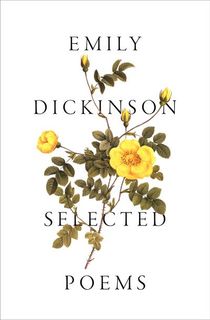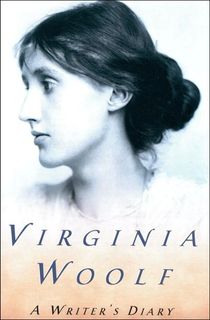The writing routine. It’s an author’s formula for success. Their key to discipline. Their trademark and their personal rock. Hours strictly allocated in the day not just for broiling portions of fine writing but for editing, contemplation, leisure time for brain rest, and practical household tasks that keep the author watered, fed, and hygienic.
In short, a concrete writing routine means organization. Literary history is littered with them, as far back as the figure of the dedicated writer has existed. Each famous author with an impressive record of books, articles, and poems has behind them a hidden schedule specifically tailored to suit their daily needs and personalities.
As noted by author Ariel Djanikian, featured by Writer’s Digest, entering into a relationship with a writing routine can require the same level of commitment of entering into a new personal relationship. It just doesn’t work long-term unless there’s real effort and the initiative to make writing every day a priority over countless distractions:
“Sounds simple, but anyone who’s forging their way through a manuscript knows how easily jobs, family obligations, self-doubt, or something wholly unexpected can get in the way. Setting up a routine, knowing when and how to get to the page, having strategies for carving out space and quiet: these are the most important things you can do for yourself as a writer.”
If such a routine is adhered to religiously, by someone who possesses regulation as well as talent, the results can be satisfactory. At times, even legendary. That’s why it’s become a popular trend among YouTubers and influencers—especially those with major writing ambitions—to road-test a certain celebrity author’s writing routine and video-record and comment on the results. The goal? To find one for themselves that works.
These experiments, or brief adventures into an idol’s life for a few days or a week or longer, sometimes have to be tweaked to suit modern times, such as the test subject using a laptop to work rather than the author’s preferred typewriter or fountain pen. But the objective is the same: using the element of control to make something happen, rather than just wait around for inspiration to come.
Emily Dickinson

American poet Emily Dickinson was a typical Victorian-era woman in that she was obligated to put her domestic duties first and her private projects second. She had a routine in place, and a strict one at that, but it was not entirely devoted to writing. She was not a professional literary woman, employed by a magazine or journal, and she was rarely published in her own lifetime. Her day jobs were that of a housekeeper, a gardener, a cook, a baker, and a caretaker for ill relatives. She had to sneak time to write, often weaving composition into her household responsibilities, as The New Yorker remarks:
“Though she usually composed at night, Dickinson sometimes jotted down lines during the day, while gardening or doing chores, wearing a simple white dress with pockets for her pencils and scraps of paper. A younger cousin recalled her reciting the ‘most emphatic things in the pantry’ while skimming the milk.”
Dickinson typically compromised time to write in the dark early hours by candlelight, when there was helpful, peaceful silence. When everyone else in the household was asleep and there were no more daytime duties nagging at her and distracting her from her art, her true vocation. As unhealthy and unproductive as this style of writing may seem to writers nowadays, it worked well enough for Dickinson. Following her death, teamwork between her family members and scholars determined that in her fifty-five years of life, she wrote over 1700 poems. These were found on assorted scraps of paper, stuffed into her desk and books. Hidden away, so that no one would ever know until after she passed on that she had such a secret second life.
Academic lifestyle vlogger Ruby Granger gave Dickinson’s night owl routine a try for a day, sacrificing much-needed sleep for the stunt. For Granger, it yielded a poem, and much to contemplate.
Virginia Woolf

Modernist British author Virginia Woolf in her prime was a writing powerhouse. She had incredible quotas to meet, both commission-based and self-imposed. But she and her husband also had a close circle of friends and Woolf’s routine reflects the necessity to maintain a social life alongside her literary one. Her secret weapon was her journal, which she utilized as a storage space for all the jumbled thoughts that didn’t fit into either her articles or her books. This she would return to at intervals to dig out material and assess her progress. Here is how writer Charlotte Perkins, a modern-day disciple of Woolf’s, summarizes her routine:
“After breakfast with Leonard, followed by her morning bath, from 9.30 am to 12pm she spent writing fiction, or reviews. Before, or after lunch was for revising. Afternoons were for walking and after tea she wrote her diary, or letters.
Her evenings she reserved for reading, or seeing friends. She found it impossible to work at night. ‘How great writers write at night, I don’t know,’ she writes in her diary in March 1923. ‘It’s an age since I tried, & I find my head full of pillow stuffing.’”
YouTube-based cultural essayist Vashik Armenikus did a commentary video on Woolf’s routine, accurately dubbing it “superhuman” and emphasizing that Woolf kept it up consistently for decades. Besides her novels-in-progress, Woolf freelanced for prestigious journals such as The Times Literary Supplement. She produced a 1500-word book review for them per week for thirty years. Armenikus notes with admiration that The Times Literary Supplement hasn’t had a staff writer quite like Virginia Woolf since her passing. Whoever her successor may be, they may want to give her routine a go.
Ursula Le Guin

Speculative fiction author Ursula Le Guin’s cheekily worded routine has recently been making the rounds of the internet. People are very amused, and fascinated, by the tasks she assigned her hours and how she describes them with her own sense of humor:
“5:30 a.m. - wake up and lie there and think.
6:15 a.m. - get up and eat breakfast (lots).
7.15 a.m. - get to work writing, writing, writing.
Noon - lunch.
1:00-3:00 p.m. - reading, music.
3:00-5:00 p.m. correspondence, maybe house cleaning.
5:00-8:00 p.m. make dinner and eat it.
After 8:00 p.m. - I tend to be very stupid and we won't talk about this.”
It’s all very regimented and to-the-point, though what occurred after 8:00pm remains a mystery. “Very stupid” could mean anything, though there is nothing stupid about Le Guin’s output, which includes the hit Earthsea fantasy series, and over one hundred short stories. Obviously, “very stupid” contributed something to the process.
YouTuber Christy Anne Jones attempted this routine as a means for making progress on her fantasy novel and concluded that it was a pleasant and productive one, though lying in bed at 5:30am doing nothing but thinking was a challenge. Jones further describes the routine as “self-indulgent,” and it is perhaps a reflection of the luxurious privileges of an author who has already found established success. This is perhaps not a recommended routine for anyone used to more fast-paced, busy, and active mornings. Or small breakfasts. Or “smart” evenings, whatever that may mean.
Stephen King

American horror writer Stephen King, having published over sixty-five novels, five works of non-fiction, and over two hundred short stories, can boast of almost inhuman literary prowess. His routine of several hours of writing each morning, as described by Lochby, manifests the power of a witch’s spell ceremony and summons around two thousand well-crafted and usable words a day. Meaning that, within a week’s time, if he abides to the routine he can write a novella:
“King is known to compare what he does before and while he’s writing to his pre-sleep activities. Whenever he sits down for his writing ritual, which is anywhere between 8:00 and 8:30 in the morning, he either has a glass of water or a cup of tea. He then takes his vitamin pill and listens to music. He also sits in the same seat with all of his papers sorted and arranged in the same places.”
King also reportedly nearly drove his wife Tabitha half-mad by playing “Mambo No. 5” on repeat while writing. She threatened divorce unless he changed the playlist. Even a genius’s supportive spouse has their limits, apparently.
This routine is especially popular as a mental exercise among younger writers. YouTuber Jed Heme committed to King’s writing routine for a month. The previously mentioned Christy Anne Jones also tried it, but only for a few days. King’s influence as a cultural icon has led aspiring scribblers to view his routine as a sort of unpredictable magic procedure, from which a work on the level of Carrie, It, or The Shining may appear. Some YouTubers sampling his routine have opted to eliminate “Mambo No. 5” and replace it with a song that suits their own tastes better, enjoying the general experience minus Mrs. King’s torture.




